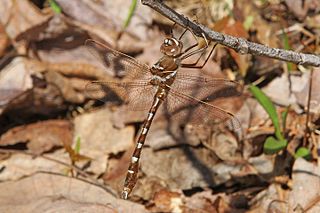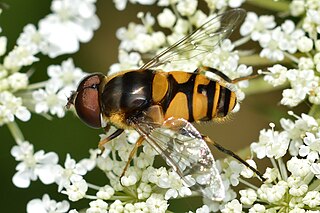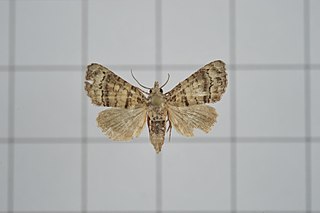Related Research Articles

Eupsilia transversa, the satellite, is a moth of the family Noctuidae. The species was first described by Johann Siegfried Hufnagel in 1766. It is distributed throughout the Palearctic.

The peritoneum of the anterior pelvic wall covers the superior surface of the bladder, and on either side of this viscus forms a depression, termed the paravesical fossa, which is limited laterally by the fold of peritoneum covering the ductus deferens.

Anadara is a genus of saltwater bivalves, ark clams, in the family Arcidae. It is also called Scapharca.

Dioscorea transversa, the pencil yam, is a vine of eastern and northern Australia.
Nebrarctia is a genus of moths in the family Erebidae from the Near East, Central Asia and Himalayas. The genus was erected by Otto Staudinger in 1891.

Platanthera transversa is a species of orchid known by the common names royal rein orchid and flat spurred piperia.

Bosistoa transversa, commonly known as the yellow satinheart, or three-leaved bosistoa, is a species of small to medium-sized rainforest tree that is endemic to eastern Australia. It has mostly pinnate leaves, usually with three leaflets and panicles of small white flowers.

Anadara transversa, or the transverse ark clam, is a clam in the family Arcidae. It can be found along the Atlantic coast of North America, ranging from Massachusetts to Texas, including the West Indies.
Nebrarctia transversa is a moth of the family Erebidae. It is found in India, Pakistan, Afghanistan and Tajikistan.

Onciderini is a tribe of longhorn beetles of the subfamily Lamiinae, they are prevalent across Europe in nations such as Turkey, and Finland.
Pseudobeta doris is a species of beetle in the family Cerambycidae. It was described by James Thomson in 1868. It is known from Brazil.
Pseudobeta ferruginea is a species of beetle in the family Cerambycidae. It was described by Galileo and Martins in 1990. It is known from Brazil.
Pseudobeta seabrai is a species of beetle in the family Cerambycidae. It was described by Monné and Fragoso in 1984. It is known from Brazil.

Sericomyia transversa is a species of syrphid fly in the family Syrphidae.

Didymops transversa, the stream cruiser, is a species of emerald in the dragonfly family Macromiidae. It is found in North America.

Eristalis transversa, the transverse-banded flower fly, is a species of hoverfly. It occurs in the eastern United States and Canada, where it is abundant and conspicuous. It flies from early April to late October in a wide variety of habitats.
Baris transversa is a species of flower weevil in the beetle family Curculionidae. It is found in North America.
Ceraclea transversa is a species of long-horned caddisfly in the family Leptoceridae. It is found in North America.

Chlumetia transversa, the mango shoot borer, is a moth of the family Euteliidae. The species was first described by Francis Walker in 1863. It is a widely distributed across Indo-Australian tropical countries far east to Solomon Islands.

Xanthodes transversa, the transverse moth or hibiscus caterpillar, is a moth of the family Nolidae. The species was first described by Achille Guenée in 1852. It is found in India, Sri Lanka, the Andaman Islands, the Nicobar Islands, China, Hong Kong, Vanuatu, Java, New Guinea, Japan, the Ryukyu Islands, Singapore, Indonesia and Australia.
References
- ↑ BioLib.cz - Pseudobeta transversa. Retrieved on 8 September 2014.